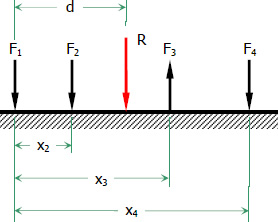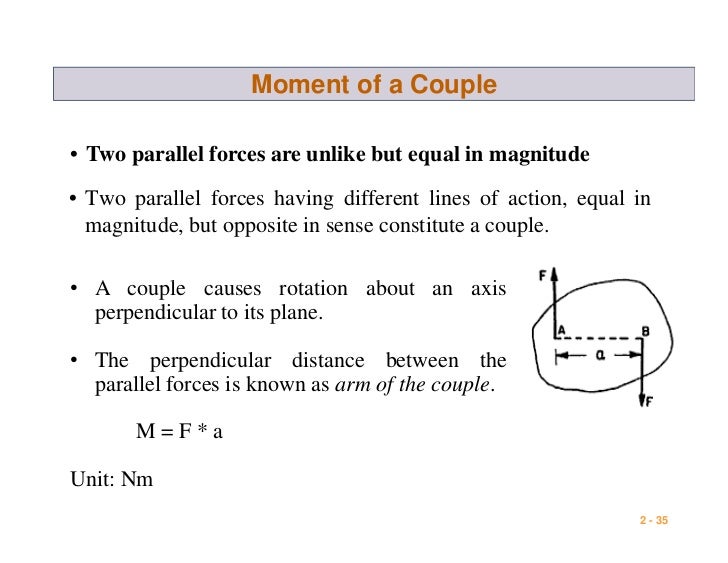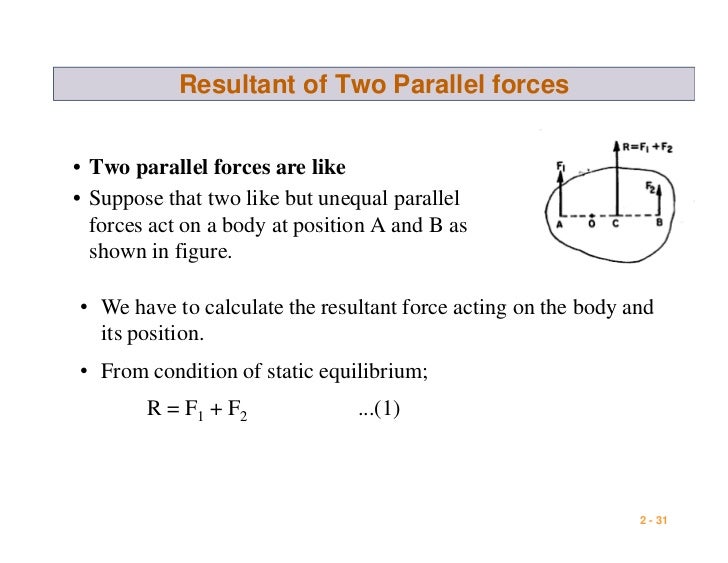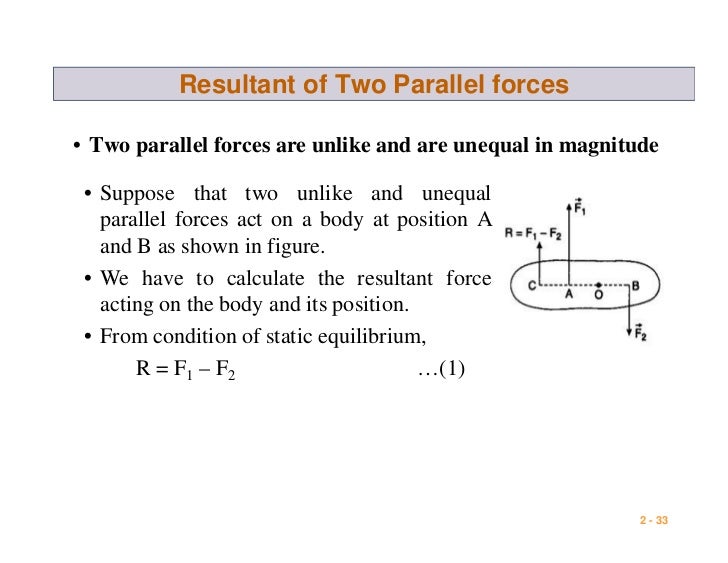Find The Resultant Of Two Like Parallel Forces Acting On A Rigid Body
Two like parallel forces 20 N and 30 N act at the ends A and B of a rod 15 m long. Bodies in which the relative position of any two points does not change.

Question Video Using The Resultant Of Two Parallel Forces Acting In The Same Direction Nagwa
The distance between their lines of action is 90 centimetres.

Find the resultant of two like parallel forces acting on a rigid body. Two parallel forces have magnitudes of 24 newtons and 60 newtons as shown in the figure. For example if a box of 15 kg is subject to 5 forces which make it accelerate 20 ms 2 north-west then the resultant force is directed north-west and has the magnitude equal to 15 kg 20 ms 2 30 N. There are two graphical methods of performing vector addition known as the triangle of forces method and the parallelogram of.
1Resultant of two parallel forces acting on a rigid bodyParallel Forces. One way to find the resultant of two forces is to use the parallelogram rule. In vector notation the resultant of forces are as follows.
Given that the two forces are acting in opposite directions determine the resultant and the distance between its line of action and point . 2 Find and sum all the moments resulting from moving each force to A and add them to the 1500 N m free moment to find the resultant MRA. We can approximate the behavior of most structures with rigid bodies because the.
1 Sum all the x and y components of the two forces to find FRA. Let us say that there is no torque. Resultant of a Concurrent Coplanar Force System The forces F1 and F2 are acting on the rigid body at point A as shown.
Which indicates that the resultant force R has the same direction as a and has magnitude equal to the product m a. R F 1 F 2 F 3. The resultant of the forces will act at the point.
Hi I have multiple torques acting at different points on a rigid body I want to find the resultant force and torque about the body CM I think I can see how to convert an off-center torque to a torque translation using the parallel axis theorem - but am wondering if there is a simpler way. In real life no body is perfectly rigid. When two forces do not have the same line of action the magnitude and direction of the resultant force may be found by a procedure called vector addition of forces.
Of that is the case then the resultant of the two forces P and Q at at point C is simply a vertical force of R P Q with no rotation about the point C. Two Marks Question Bank UNIT-I Basics and statics of particles 1. Often however we know the forces that act on an object and we need.
Equivalent Systems of forces Rigid Bodies. What are the branches of Engineering Mechanics. This is the problem of the center of percussion but with more than one force.
A parallel force system All of the action lines are parallel. Parallel forces - View presentation slides online. The solution is the same as with one force with an effective force that is the sum of the forces applied at a location that is a weighted mean of the points of applic.
The resultant of parallel forces in space will act at the point where it will create equivalent translational and rotational moment effects in the system. The equivalent resultant force and couple moment acting at A. To do this first draw the two force vectors with their tails at the same point and then draw a parallelogram with.
M o r 1 F 1 r 2 F 2 r 3 F 3. How do i prove then P. A single force that is equivalent to a given force system is called the resultant of the force system.
Define Engineering Mechanics Engineering Mechanics is defined as the branch of physical science which deals with the behaviour of a body at rest or motion under the action of forces. The resultant of two forces can be found using the methods for adding vectors when the vectors are a geometric representation. Rigid body Mechanics 2.
Basically it is a repetition of finding resultant of two forces. A 2-D force and couple system as shown. The external effect of a force on a rigid body is the same for all points of application of the force along its line of action.
The Resultant of Two Forces When vectors represent forces their sum is called the resultant. You can only say that PxACQxBC if you are told that there is no net torque no rotation of the rigid body about the point C. Deformable body mechanics also called strength of materials 3.
The Resultant of two like parallel forces formula is defined as sum of the two parallel forces in same direction is calculated using resultant First Force Second forceTo calculate Resultant of two like parallel forces you need First Force F 1 and Second force F 2With our tool you need to enter the respective value for First Force and Second force and hit the calculate button. Two systems of forces are said to be equivalent if they produce the same mechanical effect on a rigid body.

Question Video Finding The Resultant Of Two Parallel Forces Acting In The Same Direction Nagwa

Parallel Forces And Couples Ppt Download

Concurrent Parallel Forces In Physics Video Lesson Transcript Study Com

The Line Of Action Of The Resultant Of Two Like Parallel Forces Shifts By One Fourth Of The Dist Youtube

What Will Be The Effect On A Rigid Body If Two Unlike Unequal Parallel Forces Act On The Body Physics Stack Exchange

Moment Of Force About An Axis The Effectiveness

The Resultant Of Two Like Parallel Forces 5 N And 10 N Is N

System Of Coplanar Forces Part Iv Resultant Of Parallel Force System Youtube
The Resultant Of Two Like Parallel Forces P And Q Passes Through A Point O If The Resultant Also Passes Through O When Q And R Replace P And Q Respectively

Position Of Resultant Of Two Like Parallel Forces Physics Stack Exchange

Moment Of A Force With Respect To A Point Ppt Download

Resultant Of Parallel Force System Engineering Mechanics Review At Mathalino

10 1 Engineering Mechanics Single Force Resultant Of Parallel Forces Youtube

What S The Significance Of The Point At Which The Resultant Of Two Unlike Unequal Parallel Forces Acts Physics Stack Exchange

Find The Resultant Of Two Like Parallel Forces Using The Law Of Moments




Post a Comment for "Find The Resultant Of Two Like Parallel Forces Acting On A Rigid Body"